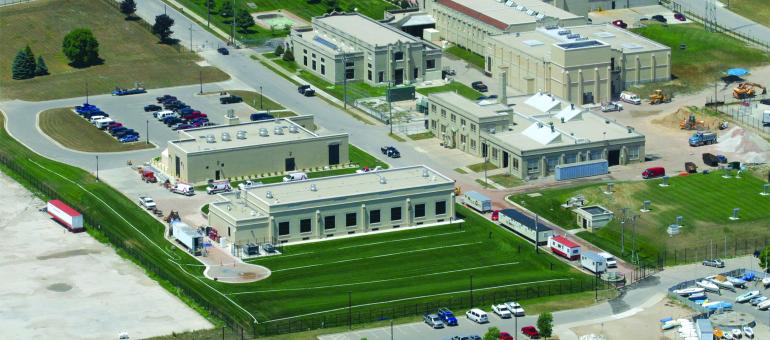How Municipalities Can Prepare for Urgent Water Crises

Water crises have accelerated and escalated over the past decade, highlighting the threat many municipalities often face. It isn’t lost on the general public just how dangerous these events can be. According to the World Wildlife Federation, by 2025, two-thirds of the world’s population are likely to be facing water scarcity.
Global water supply and quality challenges in Cape Town, Sao Paolo, and Chennai forced swift, thorough responses from both local and national governments. Those municipalities escaped catastrophe but weren’t adequately prepared. Few are ready to act until they’re met with an emergency.
Band-aid fixes can get a municipality out of the woods, but a long-term strategy is needed to properly address water supplies. Even though the risk is understood, too often it isn’t met with a proactive investment to safeguard the municipality from truly reaching a water crisis.
Water reuse, or recycling, is the best defense against this and municipalities should consider how to build the foundation for an advanced recycling program that can protect its water systems and residents moving forward.
In order to create a resilient infrastructure, it’s imperative for municipalities to understand what’s worked in the past, their existing water sources, how to incorporate water reuse, and the potential threats they face.
Lessons learned from the past
Water has always been tied to politics, which has often led to municipalities creating valuable programs that drive awareness, innovation, and technology adoption that can be emulated today.
For instance, the severe and unexpected drought in Cape Town forced the South African government to establish “Day Zero,” a political narrative addressing the day when water levels of major dams would fall below a threshold requiring widespread restrictions and rationing. Four million citizens were anticipated to go without water. Understanding the clear and drastic impact this would have, citizens collectively responded by reducing water usage and avoided Day Zero. This then gave way to many other initiatives aimed at protecting and diversifying the city’s water sources, including tapping into underground aquifers and installing desalination plants.
In the U.S., California has been a clear leader in water reuse, because protecting its water supplies has been a political priority for decades. Water scarcity and associated problems like wildfires have created an environment where the state is expected to double the amount of water it recycles annually and expand potable reuse initiatives. The California Coastal Commission recently approved a desalination plant less than five months after it rejected a similar proposal, demonstrating a new commitment to seawater desalination to bolster water supplies.
Better know your water supplies
The first step for any municipality in addressing potential threats to water supplies should be assessing existing water sources. Those with more diverse water sources will have more options for reuse systems than those with only one type of water source.
Singapore is an excellent example of a nation that took control of its water supplies to ensure resiliency. Previously, Singapore’s water supply was entirely reliant on dams and importing water from other countries. In the last half-century however, the country diversified its water supply through various initiatives, including desalination, reclaimed water use, and legal protection of national estuaries for freshwater supply — also known as the “Four Taps.”
To create the best plan for the future, you need to understand how your location affects your water supplies and what that means for moving through the continuum of recycling. For coastal locations, desalination is often ideal, and reuse is also possible as certain waste streams can be diverted to oceans. Inland locations should consider ways to replenish water when levels get low through treatment infrastructure that creates a minimal waste stream, such as ozone-biofiltration.
Know your options for enhancing water supplies through reuse
It is also important for utilities to know what options are available to close the gap between decreasing water supplies and increasing water demands. T
hese can include conservation efforts but should also include water reuse. Implementing or increasing non-potable water reuse for purposes such as irrigation, agriculture, or industrial needs can help offset potable water demand to help bridge this gap. In situations where these demands cannot be separated, this may not be sufficient. In these cases, potable water reuse may be more effective at creating a sustainable water supply for the community, treating wastewater through a multi-barrier advanced treatment scheme to meet drinking water standards and requirements.
Understand the risks
Most of the water used in Boise, Idaho, comes from the state’s groundwater aquifers, which is why the state has some of the cleanest water in the region. However, as population growth and climate change continue to threaten the region’s water supply, the city is looking at opportunities to diversify.
This year, the City of Boise will launch a pilot program to identify ideal methods to clean industrial wastewater and recycle it for additional uses. It’s the first project to come out of the City’s Water Renewal Utility Plan, and Veolia Water Technologies & Solutions has supplied treatment equipment and will support the project by collecting data and providing analysis to aid decision making.
Each municipality needs to consider its own unique circumstances when determining how to move forward with a resilient water infrastructure. Veolia can be the partner to help your municipality achieve desired water reuse outcomes while always maintaining a culture of quality, safety, and compliance. Together we can develop a comprehensive plan that fills in knowledge gaps around technology, considers regulations that can enable meaningful change, and delivers results.
Learn more about how Veolia can help you prepare your infrastructure so an urgent water crisis doesn’t take your critical systems offline and put your residents in danger.




